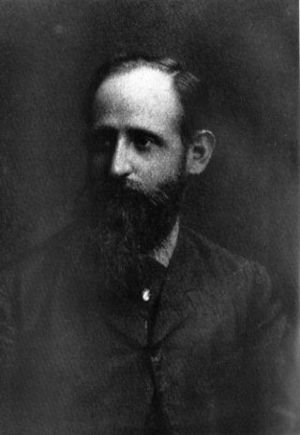Josef Breuer facts for kids
Quick facts for kids
Josef Breuer
|
|
|---|---|
 |
|
| Born | 15 January 1842 |
| Died | 20 June 1925 (aged 83) Vienna, Austria
|
| Education | University of Vienna |
| School | Psychoanalysis |
|
Influenced
|
|
Josef Breuer (born January 15, 1842 – died June 20, 1925) was an important physician from Austria. He made big discoveries in how our brain and nervous system work. In the 1880s, he worked with a patient named Bertha Pappenheim, also known as Anna O.. Their work led to a new way of helping people, called the talking cure. This method helped create the field of psychoanalysis, which was later developed further by his student, Sigmund Freud.
Contents
Early Life and Education
Josef Breuer was born in Vienna, which was part of the Austrian Empire at the time. His father, Leopold Breuer, taught religion in the Jewish community there. Josef's mother passed away when he was very young. He was raised by his grandmother and taught by his father until he was eight years old.
He finished high school in Vienna in 1858. After that, he studied at the university for a year before joining the medical school at the University of Vienna. He became a doctor in 1867. Then, he started working as an assistant to a well-known doctor named Johann Oppolzer at the university.
Discoveries in the Nervous System
Breuer did important work on how our bodies breathe. He worked with Ewald Hering in Vienna. Breuer was the first to show that a nerve called the vagus nerve helps control our breathing automatically. This discovery, now called the Hering–Breuer reflex, changed how scientists understood the connection between our lungs and our nervous system.
In 1873, Breuer also made another big discovery. He worked with a scientist named Ernst Mach. They both found out how our sense of balance works. They discovered that our brain gets information from a fluid inside the semicircular canals of our inner ear. This fluid moves when our head moves, helping us know if we are balanced or not. Another scientist had found that these canals were involved in balance, but Breuer and Mach figured out how they actually work.
Working with Anna O. and the Talking Cure
Josef Breuer is probably most famous for his work with a patient known as Anna O. (whose real name was Bertha Pappenheim). In the 1880s, Anna O. had many health problems, like not being able to move her arms and legs, losing feeling in parts of her body, and having trouble seeing and speaking.
Breuer noticed something amazing: when Anna O. talked about her symptoms, they would often get better or even disappear. Anna O. herself jokingly called this process chimney sweeping. She also gave it a more serious name: the talking cure. Breuer later called it the “cathartic method.” This meant that talking about difficult feelings and experiences could help relieve symptoms.
Breuer was a mentor to a younger doctor named Sigmund Freud. Freud was very interested in the case of Anna O. He said that Breuer's work with Anna O. was the first time anyone had helped a patient with these kinds of symptoms just by talking.
Freud and Breuer wrote a book together in 1895 called Studies in Hysteria. In this book, they shared their discussions about Anna O. and other patients. Their work with Anna O. became a very important part of how psychoanalysis developed. It showed how important it was to understand a person's thoughts and feelings, especially those that were hidden.
Over time, Breuer and Freud grew apart. Even though Breuer laid the groundwork, Freud went on to develop psychoanalysis further.
In 1894, Breuer was chosen to be a member of the Vienna Academy of Sciences, which is a big honor for scientists.
Family Life
Josef Breuer married Mathilde Altmann in 1868. They had five children together. His family faced great hardship during a difficult historical period, with some family members perishing.
See also
 In Spanish: Josef Breuer para niños
In Spanish: Josef Breuer para niños
- Hypnoid state
- When Nietzsche Wept
- When Nietzsche Wept (novel)

